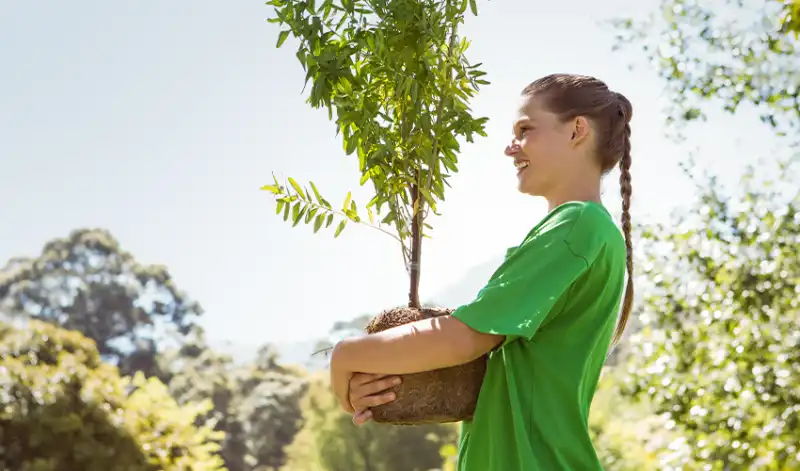Dos and Don'ts of Tree Planting

There’s nothing like a lush, green canopy to provide shade, invite wildlife and boost your spirits. But before you can enjoy the fruits of your labor, you must ensure the trees you plant today will remain part of your landscape for years to come. Follow these do’s and don’ts of tree planting for the best results.
Dos
- Do choose trees for specific purposes. You may be looking for shade, a sound barrier, privacy, increased property value, lush fall colors, spring flowers, fruit or a number of other benefits. Choose your trees accordingly.
- Do plant for energy conservation. Deciduous trees with large crowns are best for the south side of the property so the windows and roof receive shade all afternoon. Deciduous trees with lower crowns are ideal on the west side of the building to block the late afternoon sun. Small evergreen trees on the west and north sides of the lot act as windbreakers in the winter.
- Do dig and prepare the hole carefully. Contact your utility company and have them mark the location of underground lines. If you damage any lines while digging, you will likely be held liable. When preparing the site, excavate an area three times the diameter of the tree’s root ball. Dig deep enough to equal the root ball’s depth in sandy soil; dig 2 to 4 inches shallower in clay soil. Add to the excavated soil aged manure or compost totaling 25 percent of the excavated soil’s total volume. Mix well and use this as backfill.
- Do plant at the proper time. Cool, cloudy, humid fall weather is perfect for tree planting. If you obtain a tree but can’t plant it right away, store it in a cool, shaded spot and keep the roots moist. The night before planting the tree, soak bare roots in a bucket of water.
- Do set up the tree for success. Before planting, remove the plastic or metal container from the root ball. Tear off the sides of fiber pots. Remove burlap and any rope tied around the trunk. Cut away reinforcement wire. In the end, make sure the roots are “teased out” but the root ball stays intact.
Don’ts
- Don’t plant large trees in small areas. All young trees are small, but some varieties grow larger than others. Think about the mature size of a tree before choosing an area to plant. Do your research so the tree’s branches don’t run into telephone lines or buildings ten years down the road.
- Don’t choose a tree just because it grows fast. The tree might reach mature size faster, but slow-growing trees are stronger and less susceptible to storm damage. The more immediate gratification of a fast-growing tree may not be worth it.
- Don’t over-fertilize. Avoid putting fertilizer in the planting hole because it could cause root damage. Wait until spring to lightly fertilize young trees.
- Don’t trample the soil after tree planting. Once most of the backfill is in place and the roots are fully covered, water the tree with low water pressure or a bubbler. Let the water settle the soil, not your feet. If the soil settles below grade, add more backfill.
- Don’t water improperly. A well-soaked area just after tree planting is important, but from here on out, water the tree infrequently and deeply. Overwatering drowns the roots while light, frequent watering promotes shallow root growth. Continue watering through the fall and during warm, dry periods in winter to prevent drought damage.
For more help with your tree planting and other residential or commercial landscaping endeavors, contact The Grounds Guys. We're proud to be America's trusted lawn care and landscaping specialists.
 Click to call
Click to call


